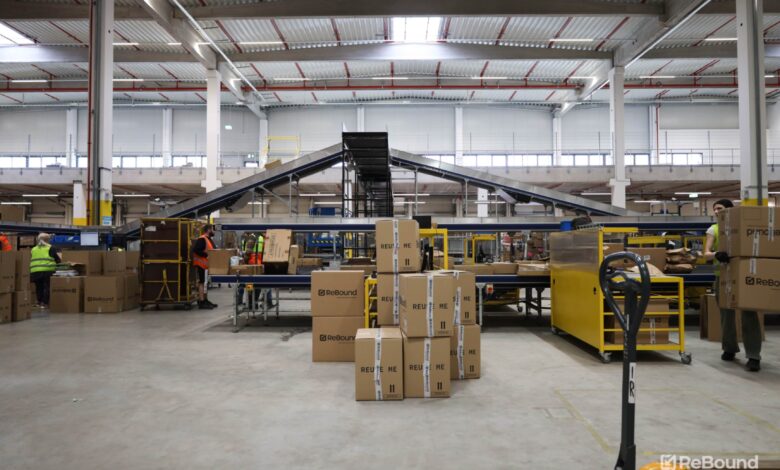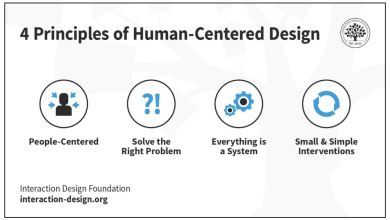
Returns are a crucial part of the retail customer journey, and a growing source of operational complexity for brands. As return rates continue to rise, the process is no longer just about getting the product back safely; how intelligently it’s handled is a key component of customer experience, supply chain management, and sustainability.
This poses logistical and financial challenges, but also creates an opportunity to convert returns from a burden into a driver of increased consumer loyalty, cost savings, and smarter operations. Artificial Intelligence (AI) is quickly becoming a key tool in this transformation, with the potential to simplify, personalise, and optimise the entire process.
Smarter returns decisions require smarter data
Today’s returns journey generates vast quantities of information, from the moment a return is initiated to when it reaches its final warehouse or resale destination. AI can use these huge datasets to analyse patterns, making it easier to answer questions such as: “why is this item returned so often”, or “are sizing issues for this product more common in certain regions?”
The ability to access and analyse data means those answers move from anecdotal or speculative to being precise, and more importantly, actionable. Retailers can use the insights to adjust product information, manufacturing, or marketing strategies in real-time. For example, understanding if a returns spike is more likely to be a fit issue, supplier fault, or delivery problem.
Predictive tools can also flag expected shipping delays before they happen, suggesting alternative routes for faster, smoother returns. This means fewer surprises and less frustration for retailers and end consumers alike.
Extensive insight also makes it far easier to identify operational bottlenecks and prioritise accordingly. For example, a seasonal item like a Christmas sweater returned in January doesn’t need to be restocked within 48 hours, but a sold-out holiday item returned at the start of summer should be to avoid it dropping in price before it can reach another customer. AI can help to categorise and prioritise returns based on relevance, value, warehouse capabilities and cost-efficiency.
This data-led approach also enables strategic decisions, such as where to route returned stock or grade it for reselling, refurbishing, recycling, or resale.
Personalised, hassle-free returns for customers
Consumers now expect high levels of convenience with their online shopping experiences as a minimum service level, rather than an added benefit. Simplifying the returns process helps to meet and exceed these expectations, and AI tools can help to achieve this by making the process more intuitive and user-friendly. At the back end, this could be through smarter returns portals, predictive delivery updates, or optimised drop-off recommendations.
Customer-facing AI tools, such as chatbots, are another area with huge potential for the transformation of returns. Already common for basic customer service enquiries, bots are increasingly capable of guiding users through returns, answering questions, and offering real-time updates. In doing so, they can collect rich data on customer behaviour, covering everything from their reason for returning the item to consumers’ communication styles.
This provides retailers with a new lens on the consumer journey. In the future, we could see AI-powered return bots that recommend nearby drop-off points, identify the most eco-friendly return options, or offer store credit instead of refund. The tools can create a tailored experience to help build trust and retain customers.
Reducing return rates
For retailers, the best return is one that doesn’t happen in the first place. AI can help here too by tackling the root causes of returns before they occur. Size and fit are major drivers of fashion returns, especially as consumers order multiples of items to try on at home before sending back. AI-powered sizing tools and fit guides can use customer data and purchase history to make smarter and more accurate recommendations to shoppers, reducing the likelihood of a mismatch and ultimately cutting return rates.
More broadly, AI can analyse trends across millions of return records to uncover hidden patterns. Understanding what’s being returned, why, and from where – and breaking that down by region or customer demographic – gives retailers the insight they need to proactively refine product design, update online item descriptions, or address quality issues with suppliers.
Detecting and preventing returns fraud
Along with the rising return rates, returns fraud is a growing concern. Driven by the ease and anonymity of online shopping, bad-faith actors look for ways to exploit returns policies. This ranges from attempting to receive a refund whilst sending back an entirely different product, such as bottled water instead of new shoes, to “wardrobing”, which is returning items that have already been used or worn.
AI and machine learning can help to tackle this issue by identifying patterns in return activity, using data from returns verification, and flagging any suspicious behaviour. This can detect fraud attempts early and reduce financial risk, helping retailers to strike a balance between providing fast refunds based on verified data, while triggering manual checks at local hubs when inconsistencies appear. Combining digital intelligence with physical checks can safeguard returns policies without compromising customer satisfaction.
Smarter returns to improve sustainability
AI and data analytics can support retailers to make returns more sustainable. By suggesting the most optimal routing to reduce the number of parcel movements or distance travelled reduces carbon emissions and cuts costs, creating a more environmentally responsible returns supply chain.
It can also optimise how existing inventory and returns are treated, by dynamically directing the items that can still be reused to the next best destination. In fact, research supported by ReBound shows that items can be returned, refurbished, and resold up to 16 times before the carbon impact matches that of producing a new item. But, one in four returned items are discarded, often unnecessarily. Intelligent return strategies can support a circular economy.
Using predictive analytics and automation can guide more sustainable practices at scale, improving the green credentials of the entire returns supply chain.
Looking ahead to AI-powered returns operations
We’re already seeing sophisticated AI-driven forecasting models making improvements in returns based on retailer profiles, country dynamics, and peak seasons. Over time, we’ll likely see this predictive capability extended across the entire returns supply chain, improving the accuracy, speed, and reliability of the whole process.
As AI evolves at such a rapid rate, so too will the possibilities, such as personalising return policies for individual customers or automating sustainability decisions at the point of initiation. However, success will depend on the ability to collect and access to complete and accurate data across the entire journey, from sale to return to resale. Implemented correctly, AI could transform the returns process into a source of long-term value.





